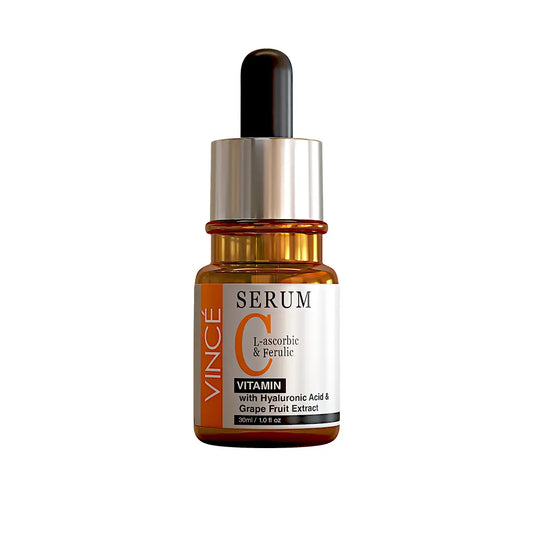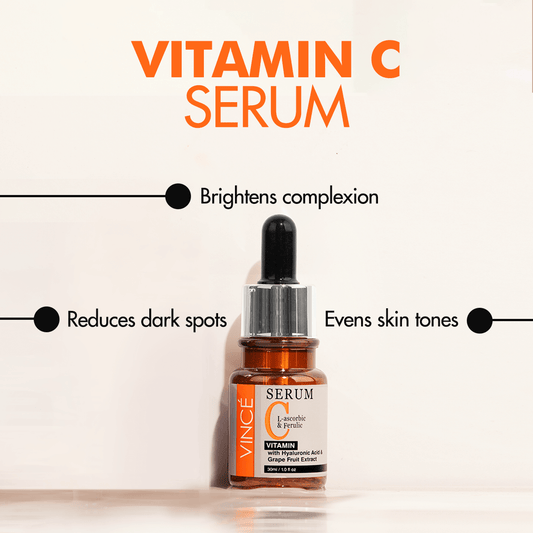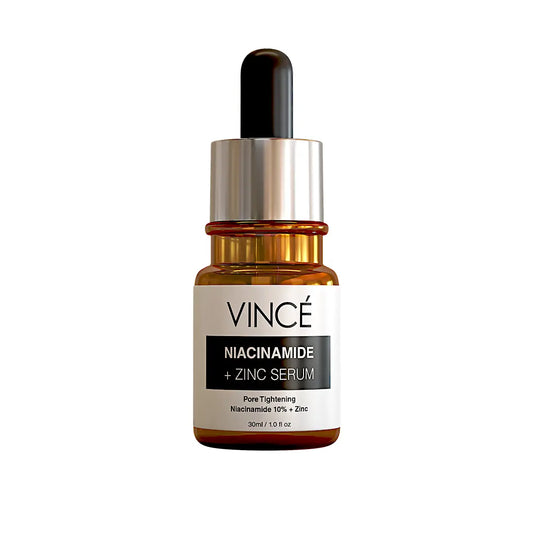Dry vs. Dehydrated Skin: Key Differences & How to Treat Them

When skin starts acting tight, flaky, and dull, Individuals are often too quick to search for dry skin treatment or dehydrated skin remedies.
However, leaping for answers before having an understanding of the difference between dry and dehydrated skin is like firing arrows without spotting the target.
How to hydrate skin is a mystery until you start paying attention to the terms hydration and moisture, which are often mistakenly used interchangeably.
This article will perfectly arm you with contrasts and solutions that work, from moisturizers for dry skin to hyaluronic acid benefits. So that next time, you won’t go out looking for answers on how to improve dry skin while your skin displays signs of dehydrated skin.
Stick around to clear all your doubts about dry vs. dehydrated skin tests to uncover the winning strategy of formulating the best skincare routine for hydration.
The Difference Between Dry and Dehydrated Skin: A Simple Guide
Your skin thrives when it maintains a perfect balance of water and oil, both essentials for a radiant and healthy complexion.
While water ensures hydration and keeps your skin plump and elastic, oil or sebum produced by the sebaceous glands strengthens the skin barrier and forms a protective layer to lock in moisture.
Hydration refers to the skin’s water content, and the term moisture relates to the presence of oil. These terms pave the way to understanding multiple skincare concerns completely, mainly identifying the difference between dry and dehydrated skin.
1: Dry Skin
Each individual has a different skin type, uniquely determined by the amount of sebum the skin releases. One of these primary skin types is dry skin, and what it tells you about your skin is that it produces way less oil than needed.
Causes of Dry Skin
Many individuals experience dry skin over time, as our skin’s ability to sebum production observe a decline with age. Apart from natural aging, other common causes of dry skin include exposure to extreme cold or dry climates, frequent hot showers, various medical conditions, and a few harsh skincare products.
Signs of Dry Skin
A few common signs of dry skin include:
- Dry, flaky, or scaly appearance
- Rough texture with a white powdery layer covering the skin
- Irritation and redness
- Compromised skin elasticity, leading to fine lines
- Increased likelihood of skin conditions like eczema or dermatitis
2: Dehydrated Skin
Dehydrated skin is a temporary condition associated with the skin’s loss of water. The prominent difference between dry and dehydrated skin may seem subtle, but primarily lies in the underlying origin.
While dry skin is a skin type lacking oil, dehydrated skin is a condition craving for water. Water is an absolute necessity that facilitates the proper functioning of all our organs, including skin, and significantly contributes to keeping skin plump, elastic, and nourished.
Causes of Skin Dehydration
When the optimal water levels go down, our skin shows clear signs of temporarily getting dehydrated until water content is restored through proper topical and internal hydration.
The main causes involve the weakening of the skin’s protective barrier and various external influences such as extreme weather, lack of hydrating products in a skincare routine, excessive sweating, and insufficient water intake.
Signs of Dehydrated Skin
The following signs can help you better understand the difference between dry and dehydrated skin:
- Tired and dull skin appearance
- Fatigued eyes lined with dark circles
- More pronounced signs of premature aging, like surface wrinkles and fine lines
- Occasional dryness that fluctuates with changes in weather, activities, and lifestyle
Dry vs. Dehydrated Skin Test
Individuals often get confused about identifying the real problem their skin is facing. If the difference between dry and dehydrated skin is overwhelming and the signs and causes seem overlapping, a simple “Pinch test” is here to solve the problem. Spare a few seconds to uncover whether your skin is dry or dehydrated:
Gently pinch the skin on your cheeks or back of your hand and release it after a few seconds.
- Dry skin: Restore its shape immediately
- Dehydrated Skin: Takes approximately 3 seconds to bounce back
Important Link: Body Lotion vs Moisturizer: Key Differences & Skincare Tips
Effective Dry and Dehydrated Skin Remedies and Tips for Nourished Skin
With the difference between dry and dehydrated skin clear in your mind, let us move forward to quick tips and skincare routines that effectively treat these common concerns. Following are a few easy-to-follow steps towards healthier skin.
Best Skincare Routine for Hydration and Moisture
The following are essential skincare products famous for reviving your complexion and nourishing your skin, which is equally beneficial for both dry and dehydrated skin.
Gentle, Hydrating Cleanser
Cleansers often leave your skin deprived of water and oil, and that is when a hydrating cleanser replenishes your skin while removing impurities. So introduce Vince’s Perfect 30’S Face Wash, which helps to achieve perfectly balanced and nourished skin, preventing further dryness and dehydration.

Hyaluronic acid Benefits
Hyaluronic acid is a humectant that draws moisture while facilitating moisture retention by penetrating deeper for a more refreshed and plump appearance. Regardless of the difference between dry and dehydrated, the following hyaluronic acid-based products work wonders for both.
-
Nothing can beat the gold-standard moisture-boosting serum infused with 2% ultra-pure hyaluronic acid and Vitamin B5 for the complete revival of dry, dehydrated, dull, and flaky skin.
-
Hydrating Body Milk offers 24-hour moisture and helps soothe the signs of dehydrated and dry skin.
-
Whether you have dry or dehydrated skin, the impact on the delicate skin around your eyes becomes prominent. So never miss Perfect 30's Eye Cream for improving dry and dull skin and enhancing elasticity to eliminate signs of dehydrated skin like fine lines and dark circles.

Moisturizers for Dry Skin
Moisturizer is a mandatory accessory for dry and dehydrated skin as it:
- Supports the skin barrier
- Prevents water loss
- Replenishes moisture
If you are looking for a best-in-class formula, Vince’s Multi-Level Moisturizing Cream becomes the ultimate choice for both dry and dehydrated skin, crafted with a perfect blend of argan oil, shea butter, and glycerin.
You can also opt for Skin Lightening Night Cream enriched with shea butter that forms a protective layer to lock in moisture and support your skin barrier.

How to Improve Dry Skin?
Along with a thoughtful skincare routine, the following simple yet effective tips also demand your attention:
- Limit your shower time to 10 minutes, and always choose lukewarm water. Formulated with the hydrating goodness of jojoba oil, try Vince’s Moisturizing Shower Gel as a great alternative to harsh soaps, cleansing your body to reveal hydrated and moist skin.
- Sunscreen becomes of great significance for dry and dehydrated skin, as the sun’s damaging UV rays further exacerbate dryness.
- Keep your inside hydrated by consuming enough water throughout the day and adding moisture to your air, especially during winter, using a humidifier.
- Use a gentle exfoliant to remove dead skin cells, thus offering your moisturizers better absorption.
Important Link: 5 Best Moisturizers for Dry Skin in Winter
Conclusion
Understanding the difference between dry and dehydrated skin empowers you to take the right path for rightfully treating the ongoing concern.
Formulate the best skincare routine for hydration, boosted with moisturizers for dry skin and products infused with hyaluronic acid benefits.
No matter whether your skin is struggling for hydration or moisture, by absorbing this knowledge, you effectively promote balanced and well-nourished skin.
Frequently Asked Questions (FAQs)
Q1: What is the main difference between dry and dehydrated skin?
The main difference between dry and dehydrated skin lies in the root cause. Dry skin is a skin type that constantly struggles to produce enough oil or sebum. On the other hand, dehydrated skin is a temporary condition where one observes tight, flaky skin due to lack of enough water. And as it’s a short-term issue, it usually improves with proper hydration, both topical and internal.
Q2: How can I tell if my skin is dry or dehydrated?
The overlapping signs and subtle contrasts often confuse individuals about the difference between dry and dehydrated skin. However, you can effortlessly perform a pinch test to be certain. Hold a part of your skin from the cheeks or back of the hand between two fingers for a moment. If it bounces back immediately after release, your skin is dry; if it takes a few seconds, it's dehydrated.
Q3: What are the best ingredients to treat dehydrated skin?
Dehydrated skin is a temporary condition that can be relieved using water-based ingredients considered by experts to hydrate the skin. Some well-known ingredients include hyaluronic acid, which effectively draws and retains moisture into the skin, and glycerin is another humectant with water-attracting properties. Aloe vera is a natural moisturizer with soothing effects.
Q4: Can oily skin also be dehydrated?
Dehydrated skin is a condition associated with a lack of water and can affect any skin type, including oily ones that may produce more oil but still lack water. When skin becomes dehydrated, it shows signs like a tight or dull appearance and eventually produces more oil to compensate for lost moisture. Leverage the power of lightweight, non-comedogenic moisturizers to hydrate skin without clogging pores.
Q5: How often should I moisturize dry skin?
If you have dry skin, adhere to the rule of moisturizing it daily twice—once in the morning and then at night before hitting the bed. This practice will keep skin well-nourished by restoring moisture and sealing it by creating a barrier. However, you may need to moisturize more frequently for overly dry skin that often feels tight and flaky, especially after showers and cleansing.





